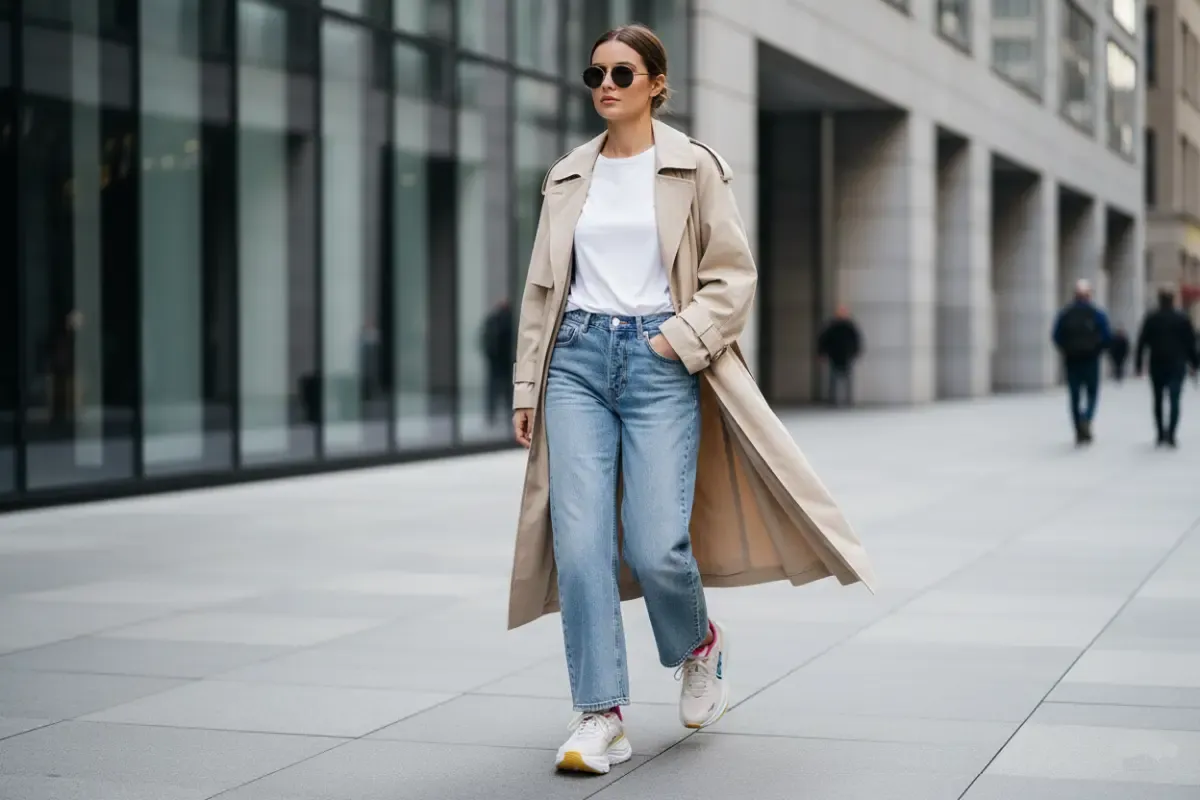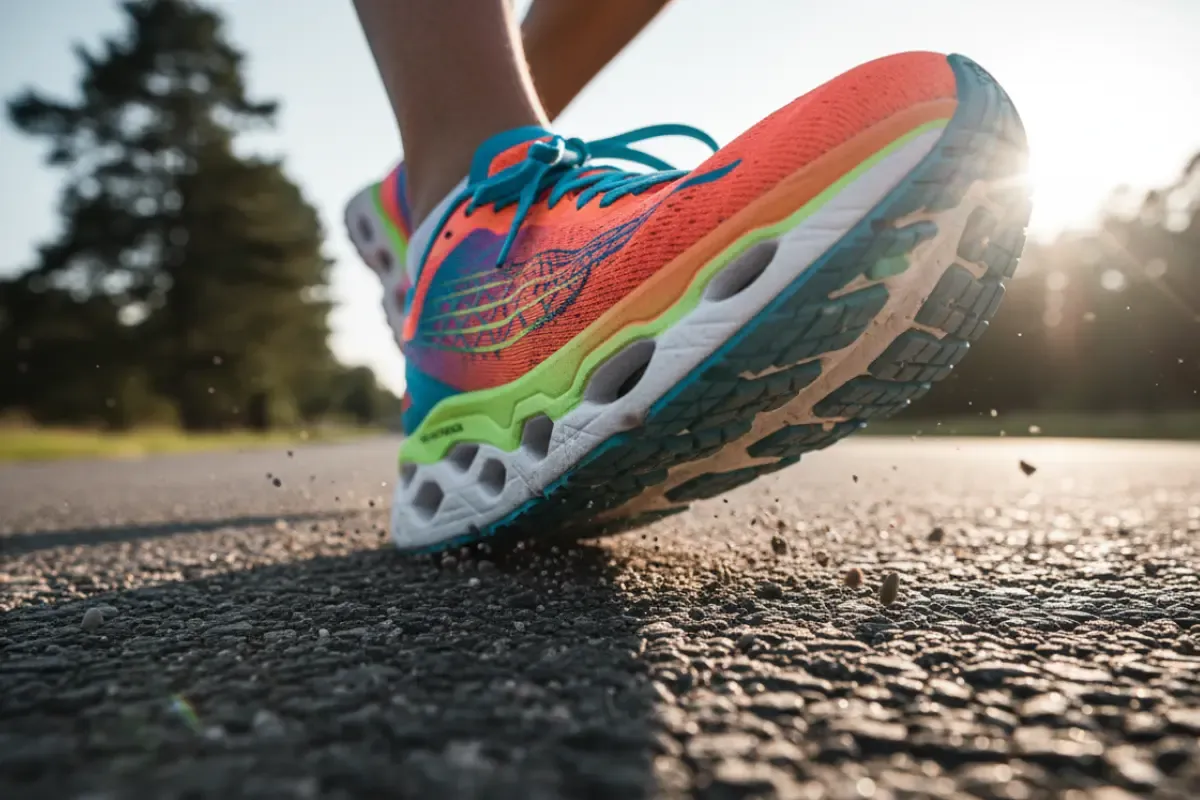
Table of Contents
Isn't it wild how K-Pop has become so much more than just music? It's a total cultural force, influencing everything from beauty standards to, believe it or not, the sneakers on our feet. Over the past decade, we've seen K-Pop idols go from simply wearing cool shoes to becoming the reason certain sneakers sell out globally in minutes. This phenomenon has seriously reshaped the fashion landscape and cemented Asia's crucial role in the global hype economy.
Between 2015 and 2024, the link between K-Pop and sneaker culture, especially in South Korea and Japan, got incredibly strong. Idols aren't just following trends; they're creating them through their visibility in music videos, performances, social media, and huge brand deals. This has absolutely skyrocketed demand, leading to instant sell-outs and a crazy active resale market in places like Seoul and Tokyo. Big brands like Nike, Adidas, and Puma, plus luxury houses, have really leaned into K-Pop's massive global reach. Iconic collabs, like G-Dragon's PEACEMINUSONE with Nike, didn't just sell shoes; they turned them into highly valuable collectibles. And newer groups like NewJeans are connecting directly with Gen Z through smart, stylish partnerships. Resale sites in Korea (KREAM, SoldOut) and Japan (SNKRDUNK) are now essential hubs for getting these hyped releases, showing huge growth fueled by limited editions and that undeniable idol factor. It's a clear cycle: K-Pop's cultural power translates directly into serious commercial impact, changing how people everywhere think about and buy sneakers.
Let's rewind a bit and see how this whole thing kicked off.
The Evolution: From Dance Practice to Fashion Icon Status
Back in the day, maybe 2015-2017, sneakers in K-Pop were mostly practical. Great for all that intense choreography, right? But they slowly started showing up more in public, becoming part of idols' everyday style beyond the stage. This is when sneakers really started meaning something in K-Pop fashion.
Brands like VANS became popular for casual, off-duty looks – you'd see groups like EXO rocking classic black ones. Puma got smart and started a long partnership with BTS in late 2015, doing collabs and campaigns that matched BTS's youthful energy. Nike was also building steam, largely thanks to G-Dragon's burgeoning influence even before his major collabs. His appearance in the 2017 Nike Vapormax campaign caused those shoes to sell out in minutes in Korea, a clear sign of his market power. Adidas was present too, fitting into the general streetwear trend, with idols like Apink's Son Na-Eun popularizing their leggings often paired with sneakers. Fashion was shifting towards athleisure, and K-Pop stylists started blending sneakers into more diverse looks. As idols wore specific shoes, fans took notice, creating an early link between idol style and consumer demand.
The real turning point hit around 2018-2020. This is when K-Pop didn't just wear trends but actively shaped them. The biggest moment? G-Dragon's PEACEMINUSONE x Nike Air Force 1 "Para-Noise" in late 2019. This shoe, with its wear-away upper revealing GD's art, the daisy logo, and unique details, was revolutionary. It retailed for $200 but sold out instantly globally, hitting insane resale prices up to $4,000 internationally and 3-5 million KRW in Korea. The "Para-Noise 2.0" followed with similar hype. These became more than shoes; they were collectible art pieces linked directly to GD's vision.
Other key moments included the Air Jordan 3 "Seoul" (2018), a limited Korea-exclusive celebrating the '88 Olympics that became a collector's grail , and the "dad sneaker" trend, like the Balenciaga Triple S, seen everywhere on idols . Brand ties strengthened, like BLACKPINK with Adidas , and some idols even designed their own sneakers (YSNEAKERS x EXO-CBX & Girls' Generation). This era solidified the formula: exclusivity, cultural relevance, and idol power created massive market impact.
From 2021 to 2024, K-Pop's sneaker influence went even more global. New idols emerged as style leaders, and the variety of sneakers seen expanded hugely. Brands got smarter, targeting specific demographics by aligning with idol aesthetics. The NewJeans x Nike partnership is a prime example, perfectly matching NewJeans' Y2K vibe with Nike's aim to reach Gen Z with lines like Air Max. Their exclusive capsule collection and fan events created major buzz. G-Dragon's influence continued with his unique PEACEMINUSONE x Nike Kwondo 1 and anticipation for the "Para-Noise 3.0". We also saw idols like LE SSERAFIM in a mix of brands from ASICS to Nike Jordans , and a general embrace of diverse styles, from Salomon "gorpcore" kicks to Rick Owens avant-garde sneakers on groups like TWS and ILLIT. Plus, more idols became ambassadors for luxury brands, often showcasing their high-end sneaker offerings.
Idol Power: Why Their Shoe Choices Matter

Idols' direct involvement in sneaker design and endorsements is a massive part of this story. They don't just slap their face on a campaign; they often infuse their own style and vision, making the product deeply personal.
G-Dragon's PEACEMINUSONE x Nike collabs are the gold standard. The "Para-Noise" series turned sneakers into a canvas for his art, instantly selling out and becoming legendary in the resale world. Even the more unique Kwondo 1 silhouette carried his signature influence. This wasn't just selling shoes; it was selling a piece of GD's cultural identity.
BTS shows a different, equally powerful trajectory. They started with a group partnership with Puma, creating accessible co-branded sneakers that were popular fan merchandise. As they became global megastars, the members transitioned to individual deals with top luxury brands (Dior, Louis Vuitton, Celine, etc.), showcasing high-fashion sneakers and reflecting their elevated status.
NewJeans and Nike demonstrate a targeted approach, aligning the group's popular Y2K aesthetic with Nike's Air Max line to directly engage the Gen Z market. Exclusive launches and fan events made these sneakers feel extra special and desirable.
Beyond these major cases, countless idols have partnered with brands from Adidas and Skechers to luxury houses, showcasing the wide range of opportunities for brands to tap into K-Pop's influence. Collaborations between Korean brands (like Kasina or ADER Error) and global sneaker companies also highlight the increasing recognition of Korean design in the global market.
The Resale Surge: Fueling the Hype Economy

All this idol visibility directly impacts the sneaker resale market, especially in Korea and Japan. Demand for limited idol-associated kicks is intense.
Key platforms like KREAM and SoldOut in South Korea and SNKRDUNK in Japan have become central to this. They provide authentication (super important!) and market data, catering to a savvy consumer base. KREAM's rapid growth and investment in SNKRDUNK show just how big and interconnected this regional market is getting.
Idol association can cause dramatic price spikes. G-Dragon's "Para-Noise" turning a $200 shoe into one worth thousands in resale is the classic example, leading to the term "Shoes-Tech" in Korea, where sneakers are seen as investments. Even culturally significant, limited releases like the Air Jordan 3 "Seoul" fetch high prices due to scarcity. Popular general release sneakers worn by idols, like the Nike Dunk Low "Panda" or Adidas Samba, also see increased demand and resale value. The interaction between idol hype, limited supply, and cultural relevance directly fuels this resale activity.
The numbers back it up: South Korea's sneaker market is projected for steady growth, but the resale market is predicted to surge dramatically, potentially reaching 6 trillion KRW by 2025 from around 500 billion KRW recently. Japan's sneaker market is also forecasted to grow significantly. Asia Pacific dominates the global streetwear market, with K-Pop as a key driver. These figures highlight the huge commercial opportunities, though the reliance on hype can make the resale market volatile.
The Fan Engine: Communities and the "Sold Out" Effect

K-Pop fans are far from passive consumers; they are incredibly active and powerful, shaping trends and driving demand. Digital platforms are their playground. Fans use Reddit, TikTok, Twitter, and more to identify idol-worn sneakers, share links, discuss styles, and mobilize for releases. TikTok is great for visual trend spotting , while Reddit is for detailed discussions and IDs . Twitter is key for real-time updates and organizing. This collective activity rapidly amplifies trends and signals demand.
The most tangible result is the "sold out" effect. Items seen on idols vanish almost instantly. This is driven by fans wanting to support idols, copy their style, feel connected to the fandom, and sometimes, the speculative investment potential. The emotional link to the idol is often paramount. FOMO and "Flex consumption" also play a role. This fan power demonstrates significant economic influence.
Beyond buying, fans build communities around K-Pop sneaker culture online. Forums and social media groups are places to share info, debate styles, and feel a sense of belonging. Owning idol-worn styles becomes a way to express fandom identity, almost like unofficial merch. These communities provide support and make navigating the sneaker world feel more accessible. They also democratize fashion info, spreading trends faster than official channels.
Industry Insights and The Road Ahead
This K-Pop sneaker phenomenon sits within the broader K-fashion landscape and global trends. K-Pop stylists are crucial architects, shaping idol looks, working with brands, and even supporting Korean designers. They balance artistic vision, brand deals, and the practical needs of performance, often customizing footwear. Their choices significantly influence what fans see and want.
K-Pop acts as a conduit for trends, reflecting and amplifying global and local styles. Korean streetwear, with its mix of luxury and affordable pieces, and trends like chunky sneakers are constantly showcased by idols. Japan's vibrant streetwear scene is also increasingly influenced by K-Pop trends spread online.
Market reports predict continued growth for sneakers in both Korea and Japan, citing K-Pop influence as a key factor. The future might see more focus on sustainability and tech in fashion, with K-Pop idols remaining vital partners for brands connecting with young, diverse global audiences. Despite challenges like competition, the dynamic link between K-Pop and the sneaker industry is set to continue, driving more innovative and culturally resonant collaborations.
The Beat Goes On
Looking back, the transformation is incredible. K-Pop went from casually wearing sneakers to fundamentally changing the sneaker market, especially in Asia, with global ripples. Idols are now trendsetters, collaborators, and hype generators. Case studies like G-Dragon, BTS, and NewJeans show the diverse ways this influence plays out, from creating collectible art to capturing specific demographics. The booming resale markets in Korea and Japan, fueled by "Shoes-Tech," are direct proof of K-Pop's economic impact. And the engine powering it all? The incredibly engaged and powerful K-Pop fan communities.
This symbiotic relationship isn't slowing down. As K-Pop keeps growing globally and fashion evolves, its influence on sneakers will only become more complex and exciting. For brands, understanding the nuances of idol power, the strength of fan communities, and the Asian market is essential. Success will belong to those who can build authentic connections and tell compelling cultural stories at the vibrant intersection of K-Pop and sneaker culture.


